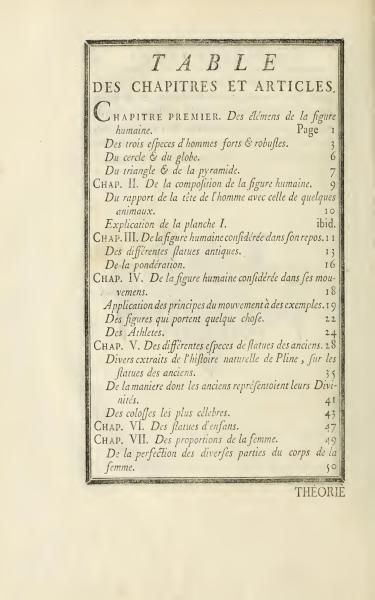TABLE
OF CHAPTERS AND ARTICLES
CHAPTER ONE. Elements of the human figure. Page 1
The three types of strong and robust men. 3
Of the circle and the globe. 6
Of the triangle and the pyramid. 7
CHAP. II. On the composition of the human figure. 9
The relation of a human's head with that of some animals. 10
Explanation of Plate I. ibid.
CHAP. III. The human figure considered at rest. 11
Different ancient statues. 13
On equilibrium. 16
CHAP. IV. The human figure considered in its movements. 18
Application of movement principles with examples. 19
Figures carrying something. 22
Athletes. 24
CHAP. V. Different species of ancient statues. 28
Various extracts from Pliny's natural history on ancient statues. 35
How the ancients represented their deities. 41
The most famous colossuses. 43
CHAP. VI. Statues of children. 47
CHAP. VII. The proportions of the woman. 49
The perfection of the various parts of the woman's body. 50
THEORY
Translation Notes:
La pondération is a concept of equilibrium or balance in art. Planche refers to a plate or illustration in a book.
